I’m back home and adjusting to normal life after such a luxuriously long time of freedom and quiet for creativity, flow, rest and reflection. Fortunately, I’ve made time to keep some of the flow and inspiration going.
My first day back to work, I was cleaning up some Hopi Red Dye Amaranth seeds. I wanted a gentle and enjoyable re-entry to work, and seed cleaning is one of my favorite things to do. So I was glad when Sarah said that’s what she needed us to do. An accidental blowing of the lightweight chaff into a nearby bucket with some wet seeds, seemed to be a sign when I peeked inside: make some plant paint!
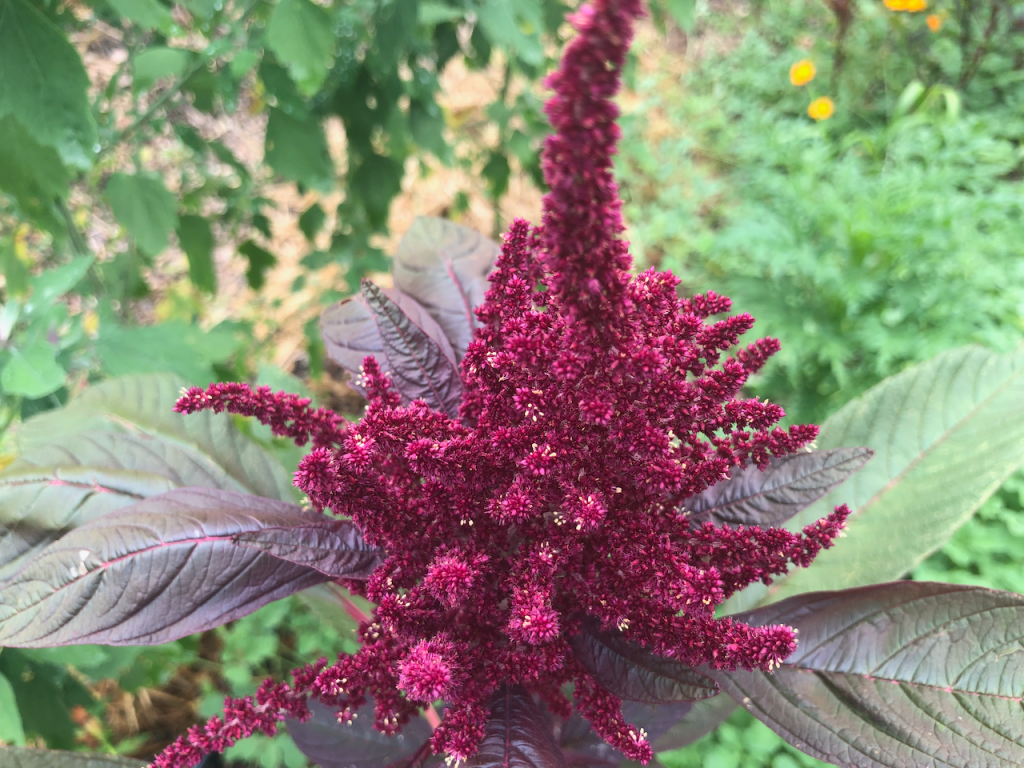
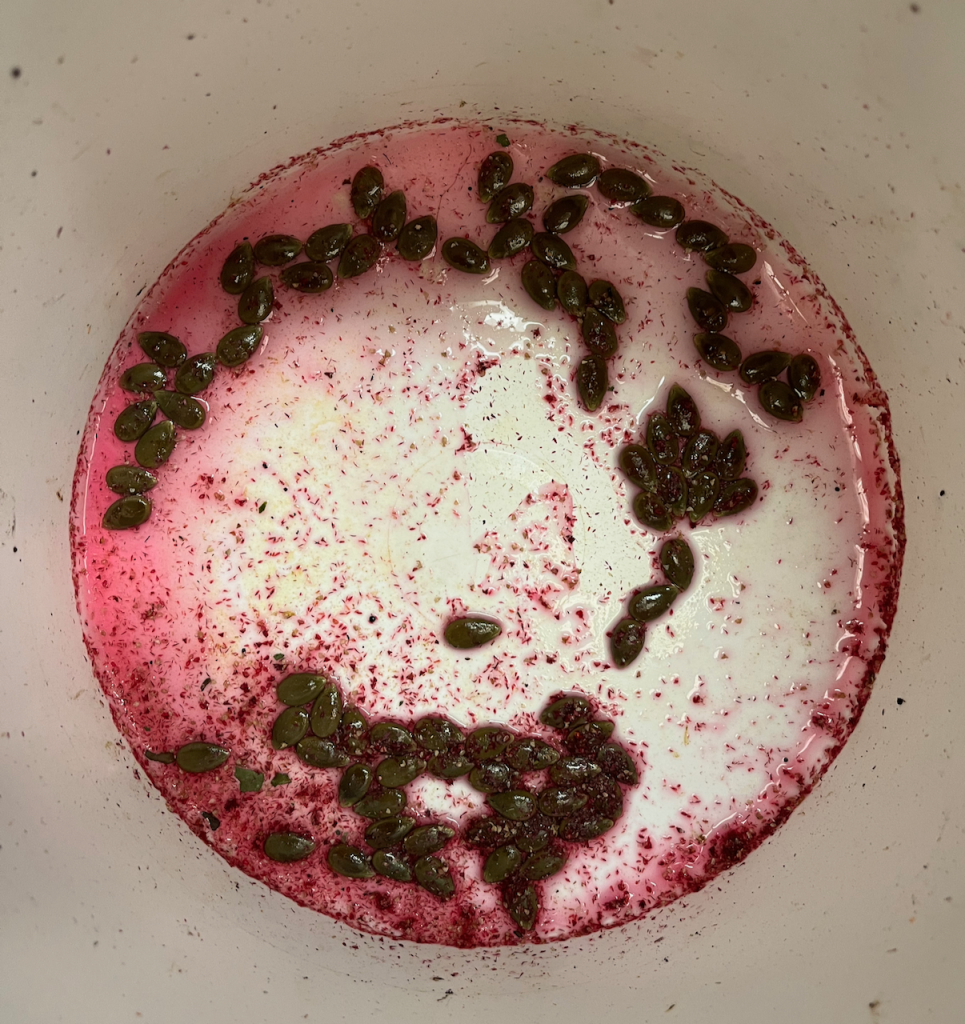
I collected all the chaff and played with it this weekend. I also made some paints from turmeric powder I’ve had on hand for a couple of years and played with some moringa and beauty berries a few different ways. They were all abundant and practically calling for me to play with them from the backyard, just as the amaranth chaff was.
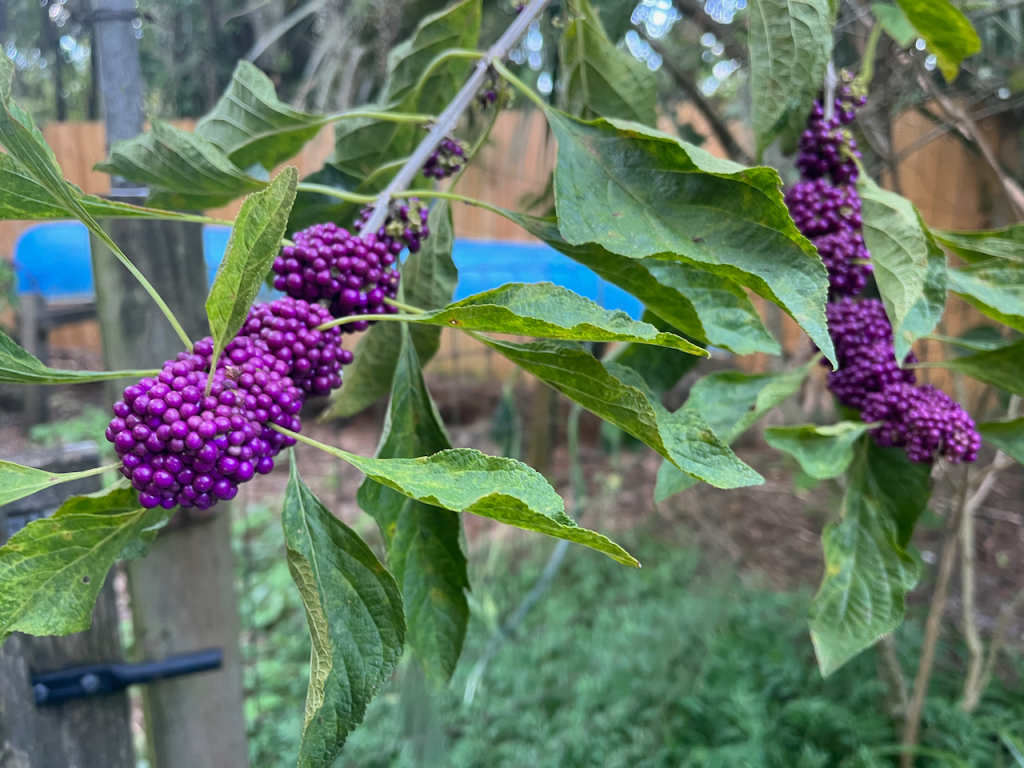
I was thinking a lot about the beautiful hikes Mike, Huxley, Okra and I did as we wound our way slowly south, stopping at Shenandoah and then Pisgah National Parks. From the mountains of Virginia to the coastal plains of Florida, goldenrod a was in full bloom! In the mountains, purple asters were also gloriously in full bloom, and were especially stunning when mingling with the goldenrods.
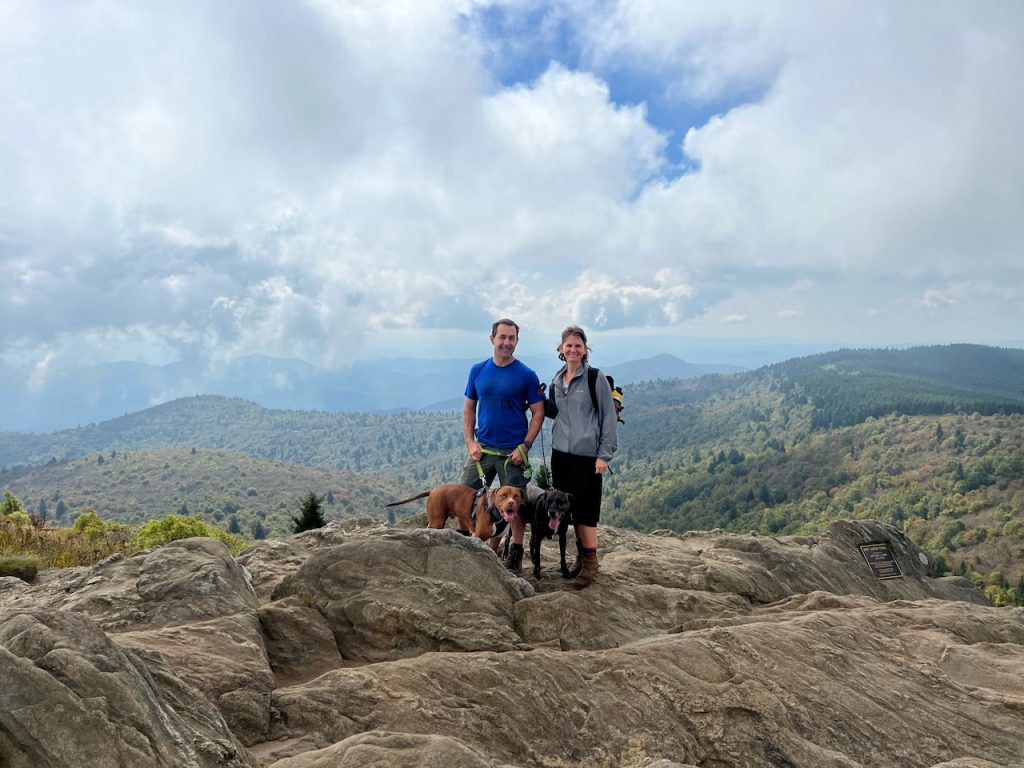
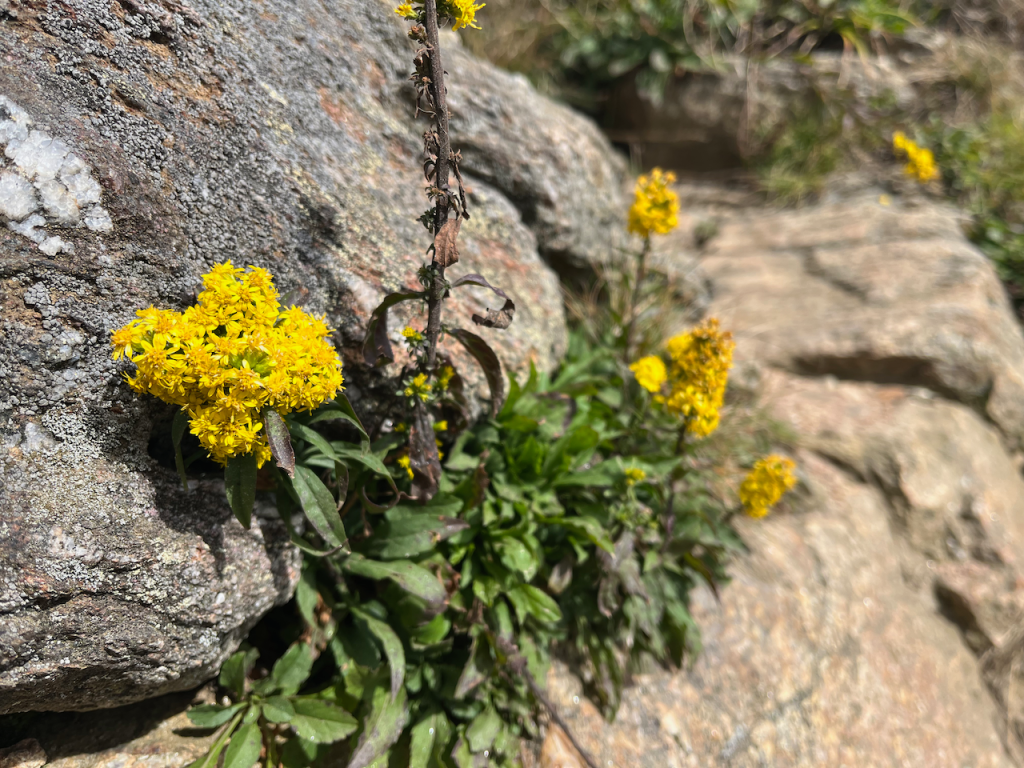
They reminded me of a chapter from Robin Wall Kimmerer’s book, Braiding Sweetgrass. An entire chapter is devoted to this stunning pair that often bloom together with showy fields of purples and yellows. It’s hard not to fall in love, and be drawn in. Robin wonders and marvels as have I, why they look so beautiful together?
Basic color wheel theory has them at opposite sides – complementary or reciprocal colors. Putting them together makes each more vivid. Just a touch of one will bring out the other.
Fun fact: although bee eyes perceive flowers much differently than human eyes, it turns out this reciprocal color display appears similar to us both! I’ve always wished I could have bee vision in a garden or field of flowers, and this might be the closest I get! Interestingly, when these two plants grow together, they both receive more pollinator visits than they do when growing alone.
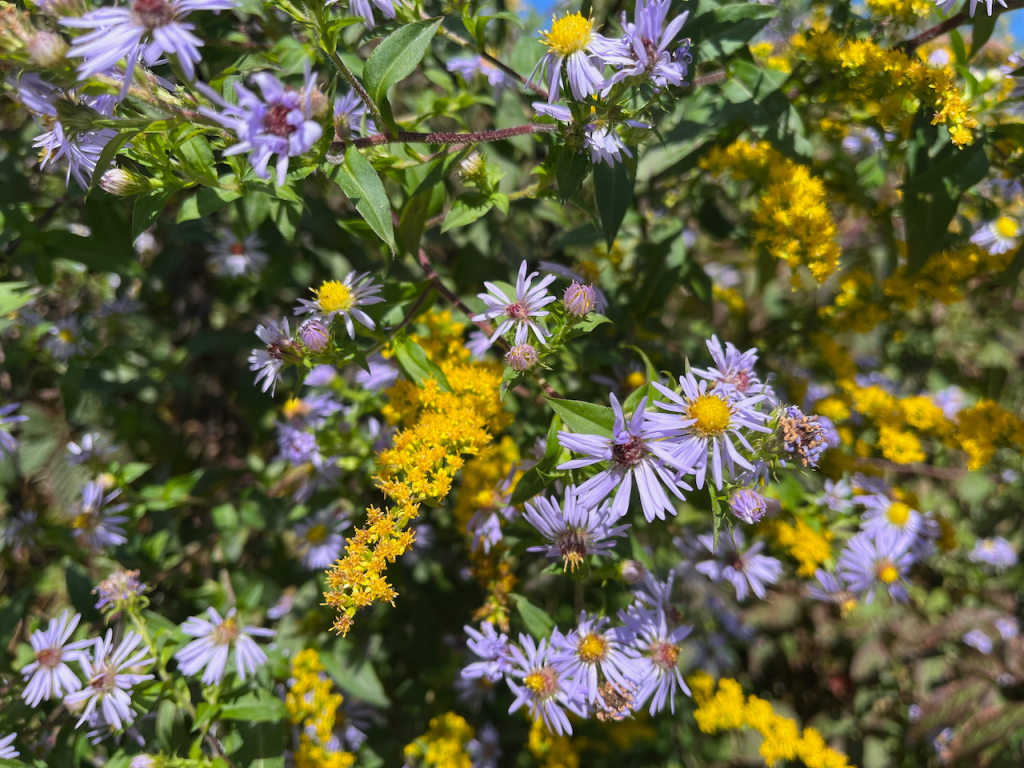
The pairing is lived reciprocity; wisdom that the beauty of one is illuminated by the radiance of the other. Reciprocity is a major theme throughout this book and one that I think, if we could all embrace and act upon, would give us a much kinder world. I’ve thought a lot about this word and what it means since reading this book.
Back to the Florida yard- the beauty berries were fun and one way of preparing them led to a lovely purple hue – ASTERS! That might not seem surprising, but just on their own simmered in water created more of a grayish purple when dried. But a touch of citric acid turned it into a vibrant pink, that dried purple on the paper. I left plenty for the birds, just taking a couple big handfuls to experiment with. I had some decent yellow options already, plus some new turmeric hues- GOLDENROD + ASTER CENTERS!
So I had the palette, and it was go time!
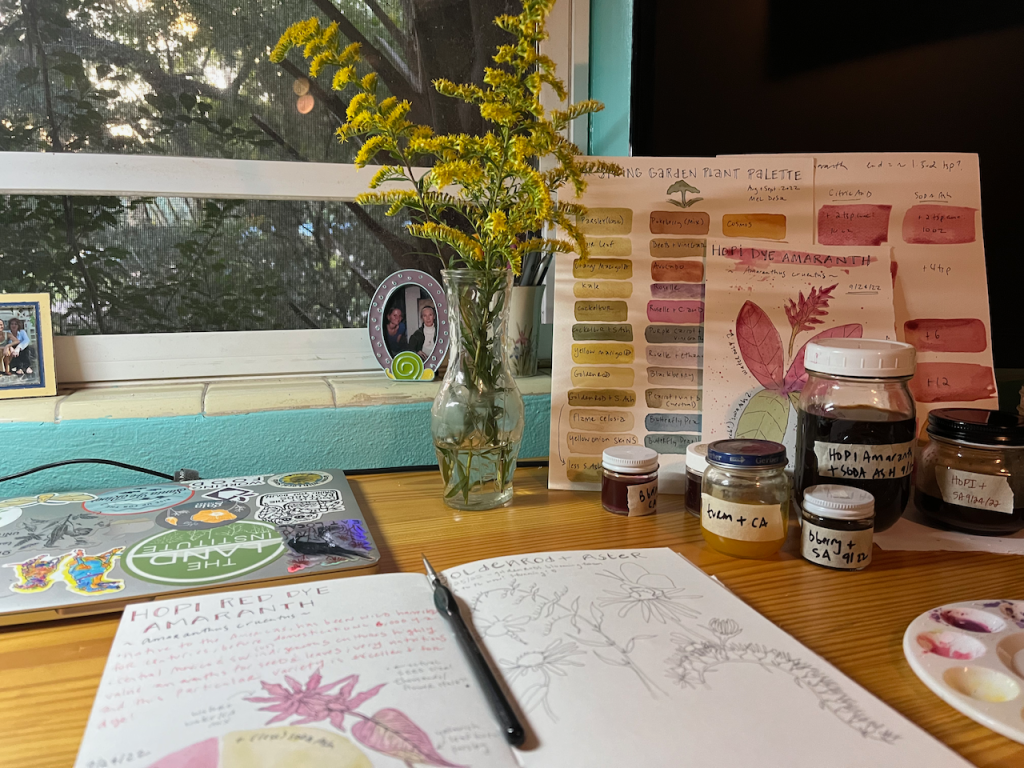
I agreed with myself on Friday, that me and my creative bee would get some time to buzz and play this weekend, despite the somewhat long and pressing list of things to do and catch up on this coming week. Oh, and the hurricane we have been watching that might come visit us this coming week was also on my mind. But worrying less and creating more seemed like the better option.
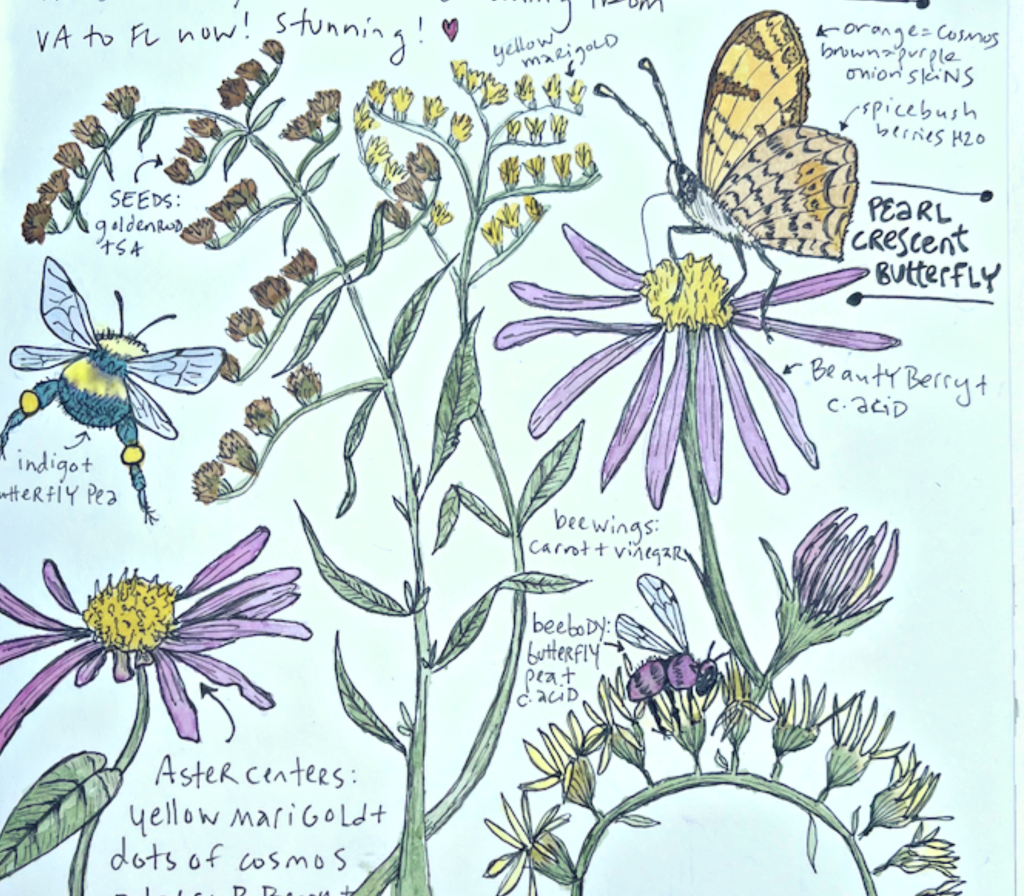
I included a Pearl Crescent Butterfly here among the pollinators. I first really noticed these small butterflies at Oak Spring Gardens in a way that some might find surprising for butterflies: swarming over a stinking mouse carcass. Many butterflies, even if they are pollinators, find value on carcasses and poop because of the salts and minerals they can’t get from a plant’s sugar water. I’d noticed them as well as some swallowtail and buckeye butterflies also enjoying some poop on the road. Nature doesn’t waste any waste! Is this reciprocity? I don’t know, but it’s neat!
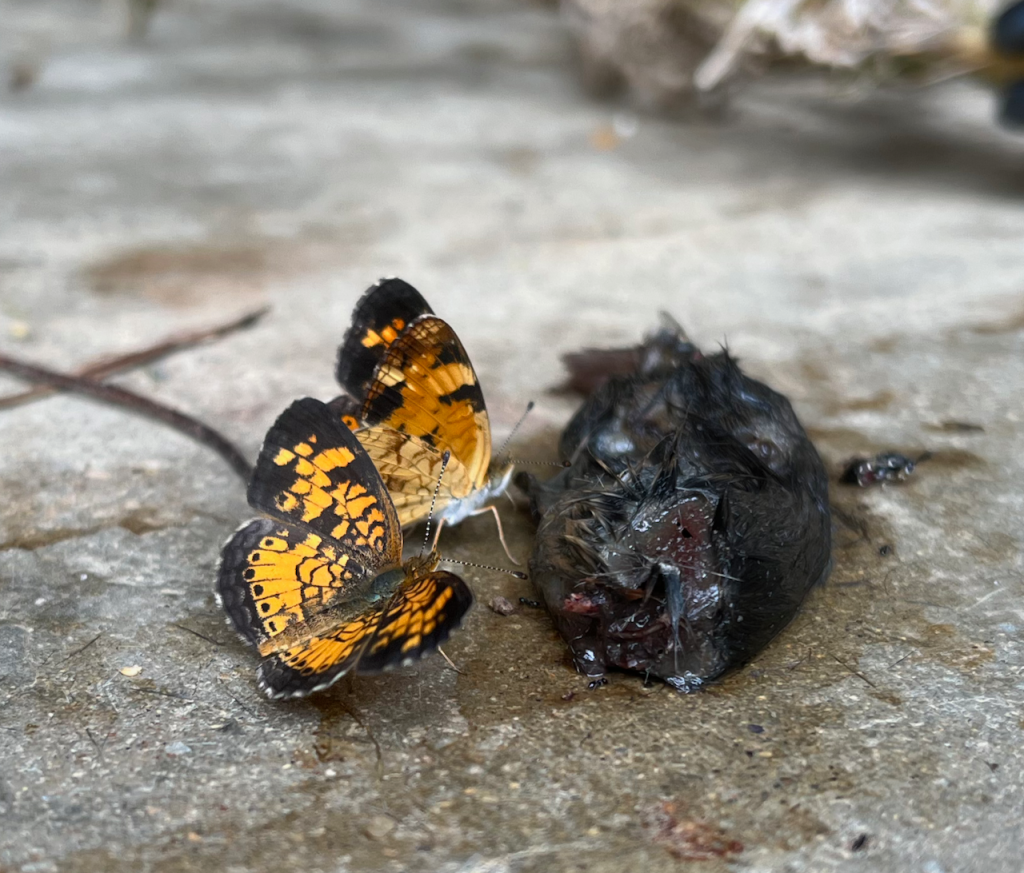
Nature never ceases to amaze me, and find me deep in wonder and curiosity; hunched over, on my knees, gazing up, or zooming in for a closer look at what most people pass by. A classic Mary Oliver poem that is pasted to the front inside cover of my sketchbook reflects this wonder in the small things so well.
The Summer Day
by Mary Oliver
Who made the world?
Who made the swan, and the black bear?
Who made the grasshopper?
This grasshopper, I mean —
the one who has flung herself out of the grass,
the one who is eating sugar out of my hand
who is moving her jaws back and forth instead of up and down —
who is gazing around with her enormous and complicated eyes.
Now she lifts her pale forearms and thoroughly washes her face.
Now she snaps her wings open, and floats away.
I don’t know exactly what a prayer is.
I do know how to pay attention, how to fall down
into the grass, how to kneel down in the grass,
how to be idle and blessed, how to stroll through the fields,
which is what I have been doing all day.
Tell me, what else should I have done?
Doesn’t everything die at last, and too soon?
Tell me, what is it you plan to do
with your one wild and precious life?